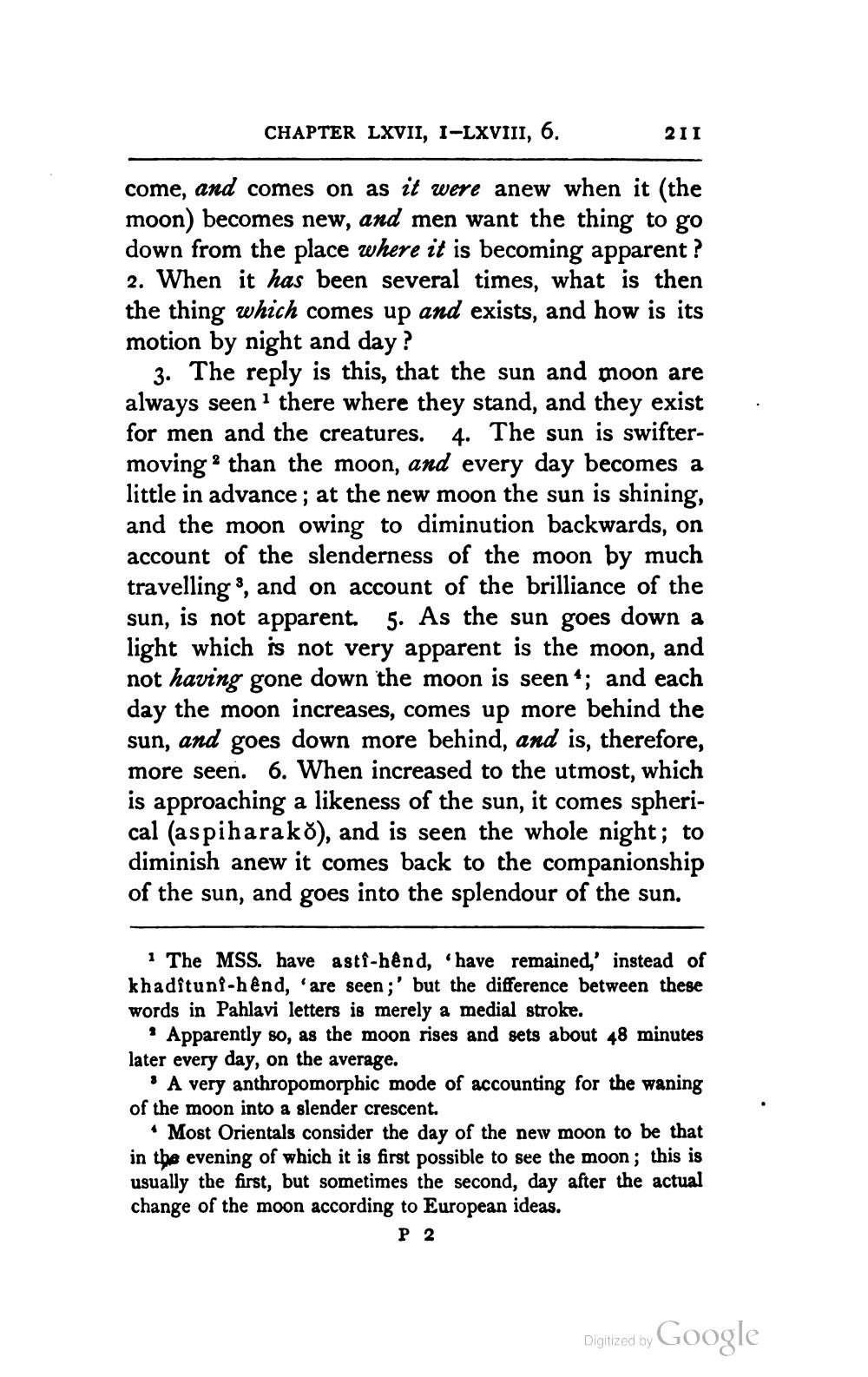________________
CHAPTER LXVII, I-LXVIII, 6.
come, and comes on as it were anew when it (the moon) becomes new, and men want the thing to go down from the place where it is becoming apparent ? 2. When it has been several times, what is then the thing which comes up and exists, and how is its motion by night and day?
3. The reply is this, that the sun and moon are always seen there where they stand, and they exist for men and the creatures. 4. The sun is swiftermoving than the moon, and every day becomes a little in advance; at the new moon the sun is shining, and the moon owing to diminution backwards, on account of the slenderness of the moon by much travelling, and on account of the brilliance of the sun, is not apparent. 5. As the sun goes down a light which is not very apparent is the moon, and not having gone down the moon is seen; and each day the moon increases, comes up more behind the sun, and goes down more behind, and is, therefore, more seen. 6. When increased to the utmost, which is approaching a likeness of the sun, it comes spherical (aspiharako), and is seen the whole night; to diminish anew it comes back to the companionship of the sun, and goes into the splendour of the sun.
211
1 The MSS. have astî-hênd, 'have remained,' instead of khadîtunf-hênd, are seen;' but the difference between these words in Pahlavi letters is merely a medial stroke.
Apparently so, as the moon rises and sets about 48 minutes later every day, on the average.
A very anthropomorphic mode of accounting for the waning of the moon into a slender crescent.
Most Orientals consider the day of the new moon to be that in the evening of which it is first possible to see the moon; this is usually the first, but sometimes the second, day after the actual change of the moon according to European ideas.
P 2
Digitized by
Google




